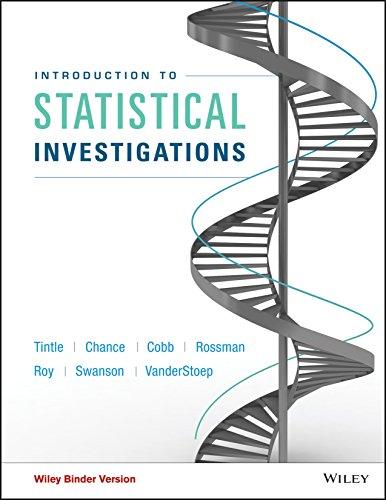Reconsider the previous exercise and the CatJumping data file. a. Determine the predicted takeoff velocity for a
Question:
a. Determine the predicted takeoff velocity for a cat with a mass of 5,000 grams (which is about 11 pounds).
b. Determine the predicted takeoff velocity for a cat with a mass of 10,000 grams. Also explain why it€™s not advisable to have much confidence in this prediction.
c. Determine the predicted takeoff velocity and the residual value for the cat with the largest mass. Also interpret what this residual value means.
Data from previous exercise
Harris and Steudel (2002) studied factors that might be associated with the jumping performance of domestic cats. They studied 18 cats, using takeoff velocity (in centimeters per second) as the response variable. They used body mass (in grams), hind limb length (in centimeters), muscle mass (in grams), and percent body fat in addition to sex as potential explanatory variables. Th e data can be found in the CatJumping data file. A scatterplot of takeoff velocity vs. body mass is shown in the figure for Exercise 10.3.15.
Step by Step Answer:

Introduction To Statistical Investigations
ISBN: 9781118172148
1st Edition
Authors: Beth L.Chance, George W.Cobb, Allan J.Rossman Nathan Tintle, Todd Swanson Soma Roy





